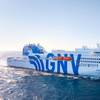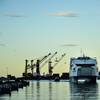HVCC Optimizes Inland Waterway Shipping
Port of Hamburg's Hamburg Vessel Coordination Center (HVCC) is developing a digital platform for inland waterway vessels, to allow ship calls to be coordinated centrally in the future.
"This marks another step towards more efficient digitised processes in the Port of Hamburg. The concept will first be presented to a wider audience today, 8 May, in connection with the celebrations for the 10th anniversary of the HVCC," said a release from the port.
The Port of Hamburg is not only the largest seaport in Germany – it is also the second-largest inland port. Around 10,000 inland waterway vessels call each year the handling facilities of the Elbe metropolis.
For ten years, the HVCC has served as a central, neutral and cross company coordination point, optimising ship traffic coming in and out of the Port of Hamburg.
HVCC’s job is to exchange data and to continuously improve the port system as a whole with as many parties involved as possible. And this has been successful, with almost all shipping companies with mega-ships making use of NTC’s services, while the FLC coordinates the rotation of over 4,000 incoming feeder and inland waterway ships at the Port of Hamburg.
Given the growth in container transportation by inland waterway vessels in Hamburg, the HVCC is now developing its own inland shipping platform. Since 2012, the annual volume of container traffic reaching or leaving the Port of Hamburg by inland waterway vessels has grown by 40 percent to over 128,000 standard containers (TEUs).
Added to this are the more than 100,000 TEUs of “water-to-water transshipments” – transports conducted between terminals via inland waterway vessels – in the previous year.











